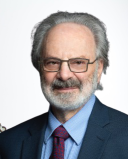Parapsychology
The Quantum Mind: From NDEs to Post-Materialist Science
Matter is not the sole component of reality.
Posted June 27, 2022 Reviewed by Ekua Hagan
Key points
- The study of near-death experiences challenges the idea that the mind fades to black when the body expires.
- Those who believe in telepathic communication claim that the thoughts and feelings of one person can affect another.
- Post-materialism science is not synonymous with materialism and is not committed to any particular belief, dogma, or ideology.

This post is part of a series. You can read part 1 here.
“Everything that can be counted does not necessarily count; everything that counts cannot necessarily be counted.”
—Albert Einstein
In part 1 of this series, "Quantum Mind," we learned that the mind complements matter, just as the particle aspect of matter complements its wave aspect. Consciousness can interface with the material world because matter and energy are interchangeable. In the age of quantum mechanics, the physical world is no longer seen as the primary or sole component of reality.
In this post, we shall extend these core ideas to encompass near-death experiences, telepathic communication, and past life recollections. And we shall be introduced to post-materialism science.
Near-Death Experiences
Philosopher and psychiatrist Raymond Moody, whose 1975 book, Life After Life, detailed the experiences of more than 100 people who survived “clinical” death but were revived, coined the term Near-Death Experiences (NDEs).
NDEs are triggered during singular life-threatening episodes when the body is injured by blunt trauma, a heart attack, asphyxia, or shock. When revived, these people tell us what it was like for them to exist poised between life and death. Such people share strikingly similar narratives: They speak of having experienced wonderful sensations of peaceful tranquility and happiness, seeing a welcoming golden glow, often at the end of a tunnel, being greeted by deceased relatives, or detaching from their body and floating above it and even flying off into space. They often feel obliged to make a choice—remain in this other world, in other words dead—or, return to life.
Usually, they relate perceiving themselves from a perspective above or to the side of their physical body and describe accurately the conversations of the medical staff present in the room as well as the medical interventions that were performed on them. They claim that their spirit left their body and observed what they shouldn’t have been able to observe given that they were clinically dead.
The majority of NDE survivors become wholly transformed by the experience. They grow into more caring, less self-centered persons, more engaged with helping others, and less afraid of dying.
The phenomenon is remarkably consistent across cultures and religions and has been reported by children and toddlers. This is noteworthy because skeptics have raised the objection to the credibility of these accounts by pointing out that they may be due to religious indoctrination. Unlike adults or older children, young children or toddlers aren’t exposed to religious doctrine. Yet they report near-death experiences similar to older children and adults.
In 2014, Sam Parnia, critical care and resuscitation specialist at New York’s NYU Langone Medical Center, published the world’s largest study of what happens to the human mind and consciousness in the early period around the time of death. Based on his research, Parnia believes that the conscious mind continues operating after the heart stops beating and the brain stops working for some time. The study of near-death experiences is challenging the idea that our mind fades to black when our body expires.
Telepathic Communication
Telepathic communication is another example of how the thoughts and feelings of one person can affect another. Imagine you are drinking a cup of coffee at Starbucks and suddenly, you have this feeling that someone is looking at you from behind. You turn around and you meet the eyes of the person who was looking at you. How did you apprehend that?
Or, consider the accounts of identical twins. Perhaps as many as one in five claim to share something mysterious: a special psychic connection. Identical twins are often very close and share not only genes but home environments, friends, clothes, and, of course, secrets.
Many years ago, I recall seeing a patient who had a twin brother living hundreds of miles away. One night, this man, let’s call him Paul, suddenly experienced an overwhelming feeling of dread. Convinced it involved his twin brother, he rushed to the phone and called him. His wife answered and said that her husband, Paul’s brother, was involved in a serious car accident. Hundreds of such occurrences have been reported. These are instances of telepathic communications that presently neither classical physics nor psychology can explain.
Past Life Recollections
Lastly, there is the astonishing work that professor of medicine, Ian Stevenson, published in six volumes by the University Press of Virginia, based on reports of hundreds of ordinary children who claim to have had past life recollections. From this group, he selected 20 cases in which the detail of recollections is so accurate and confirmed by multiple checks that in his opinion they represent genuine memories from previous lives.
Physical vs. Mental Phenomena
You may well ask: Where do these phenomena originate? Surely, not from thin air. No doubt in the brain and all its connected networks, the structures that support the embodied mind. This brings on more questions. Is the mind separate from the body? What is it made of? Where does it dwell?
Physical phenomena, at least at the macroscopic level, have a location in space and can be quantified. On the other hand, mental phenomena cannot be localized and cannot be quantified. The new generation of post-materialist scientists and those familiar with quantum physics have taken a run at this puzzling conundrum.
Post-Materialist Science
Riding this momentum, Stuart Hameroff, from the departments of anaesthesiology and psychology, University of Arizona, Tucson, supported by Sir Roger Penrose together with a group of scientists from a variety of fields such as neuroscience, biology, medicine, psychiatry, and psychology initiated a new science they call post-materialist science. These scientists emphasize that science is first and foremost a non-dogmatic, open-minded method of acquiring knowledge about nature through the observation, experimental investigation, and theoretical explanation of phenomena. Its methodology is not synonymous with materialism and is not committed to any particular belief, dogma, or ideology.
I fully support this stand. We should follow the evidence and rely on the data.
References
Moody, R. A. (2001). Life after life. Random House.
Parnia, S., Keshavarz, T., McMullin, M., & Williams, T. (2019). Awareness and Cognitive Activity During Cardiac Arrest. Circulation, 140(Suppl_2), A387-A387.
Stevenson, I. (1983). American children who claim to remember previous lives. J Nerv Ment Dis, 171(12), 742-748.
Beauregard, M., Schwartz, G. E., Miller, L., Dossey, L., Moreira-Almeida, A., Schlitz, M., ... & Tart, C. (2014). Manifesto for a post-materialist science. Explore: The Journal of Science and Healing, 10(5), 272-274.




